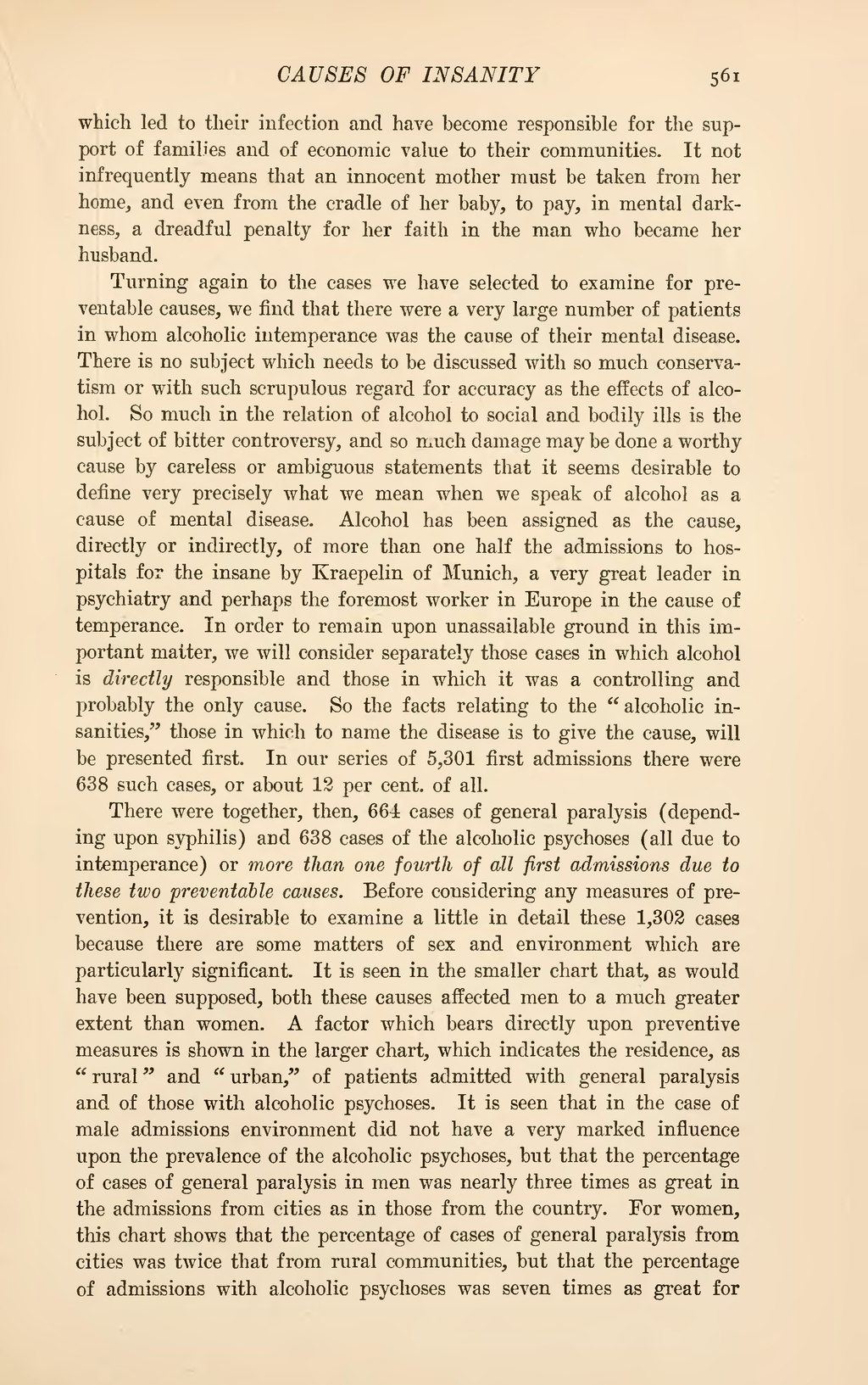which led to their infection and have become responsible for the support of families and of economic value to their communities. It not infrequently means that an innocent mother must be taken from her home, and even from the cradle of her baby, to pay, in mental darkness, a dreadful penalty for her faith in the man who became her husband.
Turning again to the cases we have selected to examine for preventable causes, we find that there were a very large number of patients in whom alcoholic intemperance was the cause of their mental disease. There is no subject which needs to be discussed with so much conservatism or with such scrupulous regard for accuracy as the effects of alcohol. So much in the relation of alcohol to social and bodily ills is the subject of bitter controversy, and so much damage may be done a worthy cause by careless or ambiguous statements that it seems desirable to define very precisely what we mean when we speak of alcohol as a cause of mental disease. Alcohol has been assigned as the cause, directly or indirectly, of more than one half the admissions to hospitals for the insane by Kraepelin of Munich, a very great leader in psychiatry and perhaps the foremost worker in Europe in the cause of temperance. In order to remain upon unassailable ground in this important matter, we will consider separately those cases in which alcohol is directly responsible and those in which it was a controlling and probably the only cause. So the facts relating to the "alcoholic insanities," those in which to name the disease is to give the cause, will be presented first. In our series of 5,301 first admissions there were 638 such cases, or about 12 per cent, of all.
There were together, then, 664 cases of general paralysis (depending upon syphilis) and 638 cases of the alcoholic psychoses (all due to intemperance) or more than one fourth of all first admissions due to these two preventable causes. Before considering any measures of prevention, it is desirable to examine a little in detail these 1,302 cases because there are some matters of sex and environment which are particularly significant. It is seen in the smaller chart that, as would have been supposed, both these causes affected men to a much greater extent than women. A factor which bears directly upon preventive measures is shown in the larger chart, which indicates the residence, as "rural" and "urban," of patients admitted with general paralysis and of those with alcoholic psychoses. It is seen that in the case of male admissions environment did not have a very marked influence upon the prevalence of the alcoholic psychoses, but that the percentage of cases of general paralysis in men was nearly three times as great in the admissions from cities as in those from the country. For women, this chart shows that the percentage of cases of general paralysis from cities was twice that from rural communities, but that the percentage of admissions with alcoholic psychoses was seven times as great for

